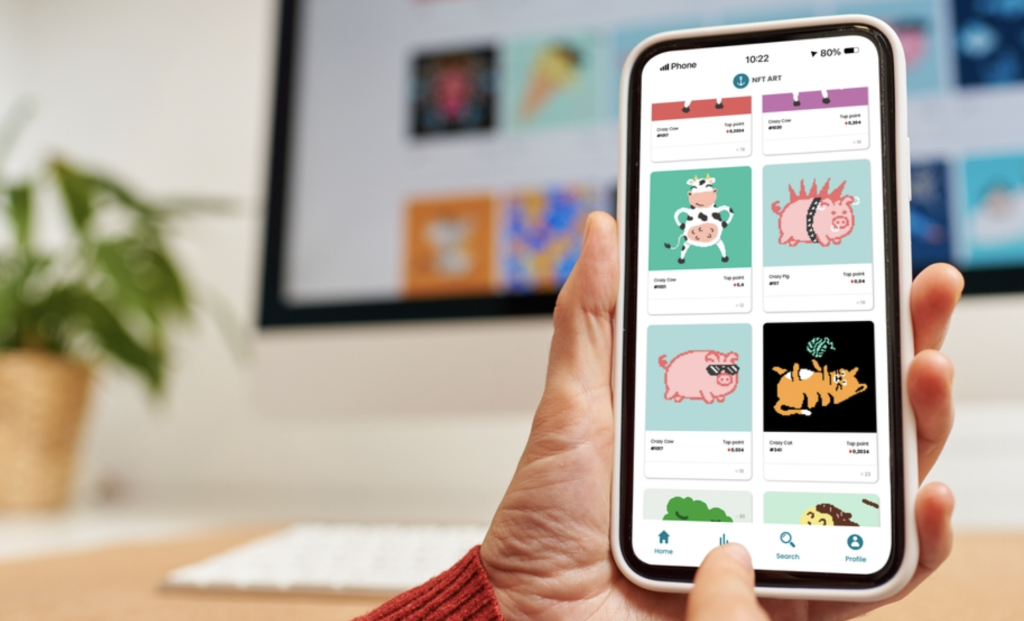Although cryptocurrency has been around for around 30 years, it’s slow rise to prominence gave way to a meteoric boom in the 2010s and quickly revolutionized the world as we know it. Becoming one of the most lucrative industries in the world, the price of Bitcoin reached $1 in 2011 before hitting the $1000 mark in 2013. Under 10 years later, it currently sits at around $20,000 and even went as high as $60,000 at its peak. It paved the way for the crypto market and allowed for the advent of over 6000 coins available to buy and trade with. The blockchain technology behind cryptocurrency has changed the world, and it did not stop at currency. The evolution of blockchain has allowed for the advent of Non-Fungible Tokens in recent years, becoming one of the biggest trends of the 2020s so far.
On the surface, NFTs may seem hard to understand. However, they are relatively straightforward. Non-Fungible tokens use blockchain technology to store a unique unit of data, which helps to establish proof of ownership. The tokens themselves come in many forms. They could be videos, gifs, digitally created art, music and more. The value of NFTs lies not just in their creativity but also their rarity. The term non-fungible literally means non-exchangable, in that they cannot be traded or replaced with an identical item, nor can they be copied. So, every NFT is one-of-a-kind both creatively and in ownership.
Many of you may like the sound of investing in NFTs for your own collection: but why stop there? Creating your own NFT can be extremely fulfilling. It is also very affordable too, ranging from five cents to $150 to create a token. This range depends on the cost of blockchain, gas fee, marketplace account fee, listing fee etc. If you would like to know more on how to create an NFT then check out Draftkings’ guide.
2021 was the biggest year for NFTs, with some gigantic sales made. Included among these were CryptoPunk #7523 which sold for $11,754,000 and Beeple’s “Human One” for $28,985,000. Sales now range between $10 million and $20 million per week with thousands of tokens made every day. What is even more incredible is that NFTs are technically still in their infancy, having only experienced the rise to prominence in the last couple of years. This leaves plenty of space for growth in the industry, meaning these numbers may only be the beginning.
The outlook is bright for NFTs going forwards for traders, collectors and artists. NFTs are helping to eliminate the stigma of elitism in art by making it more accessible. Artists are able to create and distribute their creations on their own accord and collectors know exactly where to go to look for them, rather than hunting for expos and galleries. NFTs have helped bring art into the mainstream like Warhol did in the 60s. It has never been easier to create, view and purchase pieces of art and whilst purists may argue over its validity, it seems they are destined to be left behind as the industry moves further into the 21st century.
There are things that creators can develop further however to help the industry become a growing commodity. One such example is incorporating the use of VR. W hilst there are a few VR NFT galleries, there is yet to be a major VR only NFT.
Gamification is also something that has been explored further in NFTs with some success. For example, online video game ‘Axie Infinity’ allows players to purchase, breed and battle with NFT creatures as well as buy land in game. It is likely this will grow even further and we’ll soon see things like NFT character skins as well as more NFT based games like Axie Infinity.
This is also going to welcome change in regard to how artists make a living, and even allow more of them to make a living as opposed to using their talent as a side hustle. Artists can receive payment directly without the need for an art dealer and collectors can also directly support creators through purchasing their tokens. By cutting out the middleman it means that there is no unnecessary expense for both the artist and the collector, as well as making it a smoother process.
Over the last couple of years, NFTs burst into the collective minds of both artists and collectors, becoming a pop culture phenomenon. The societal and monetary hurdles that previously existed for both artists and lovers of art have been removed, refreshing the industry for a new audience. The future of NFTs looks extremely bright as the industry continues to boom.
